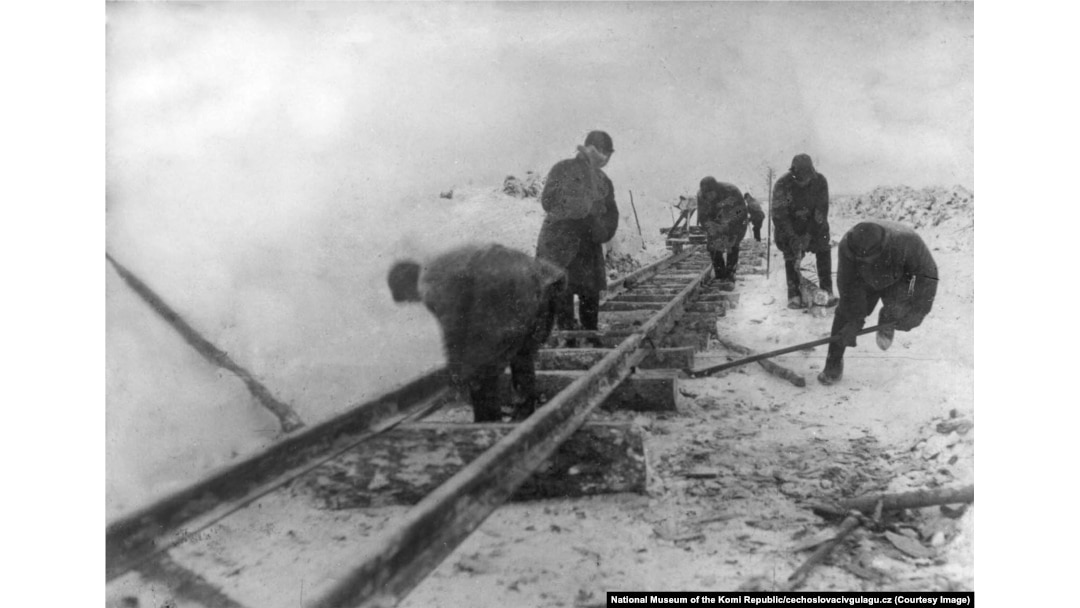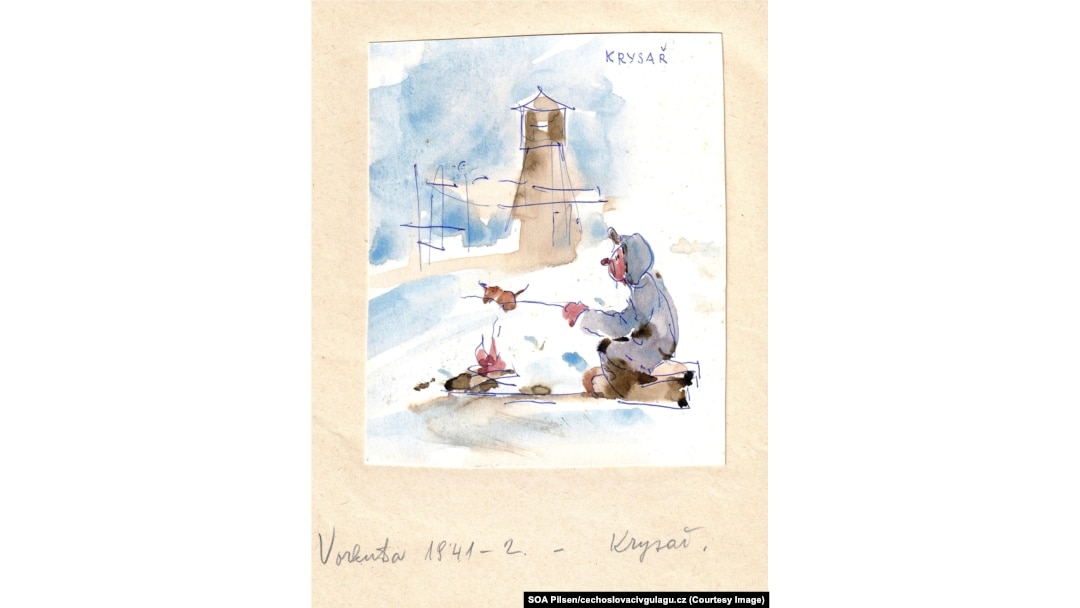Photographs and thousands of documents casting light on the fate of Czechoslovak citizens imprisoned in the gulag have been published online, with many more to follow.
As invading German tanks rolled into Prague in March 1939, thousands of ethnic Ukrainians, Jews, and Czechs living in Czechoslovakia were on the run, fleeing east toward the Soviet Union.
For the approximately 8,000 who crossed the Soviet border, it was out of the frying pan and into the fire. Nearly all of the refugees were captured by the Soviet authorities and sent to the network of forced labor camps across the U.S.S.R. known as the gulag. Most were sentenced to three to five years of hard labor for crossing the border illegally; others faced harsher charges often fabricated by the authorities.

Gulag prisoners working on a small railway in the Komi Republic.
On January 3. the Czech Institute for the Study of Totalitarian Regimes (USTR) published Soviet secret police files on 1,000 mostly ethnic Ukrainian refugees who fled eastern Czechoslovakia during World War II and ended up in the gulag. The documents and photographs are an early sample of a digitization project that represents more than a decade of work by Czech, Ukrainian, and Russian historians and archivists.

An illustration of a gulag prisoner roasting a rodent. The Czech word at top right means “ratcatcher.” The illustration is from the memoirs of Vladimir Levora, a Czech artist who was sentenced to three years in the gulag for illegal border crossing. He died in the Czech Republic in 1999, aged 78.
The release of the documents was timed to coincide with the 80th anniversary of a Soviet "amnesty" of most Czechoslovak gulag prisoners on January 3, 1942. The released prisoners were freed from the camps to form brigades to fight the Nazi advance into the Soviet Union. Many of the released Czechoslovaks died in battle.
Czechoslovak officers in Soviet captivity.
Czech historian Adam Hradilek began interviewing survivors of the camps in 2006, before he joined the USTR, but access to secret police files in Russia and Ukraine was extremely difficult. Hradilek says the research climate in Ukraine changed dramatically in 2014 following the Maidan revolution. Three weeks after the massive street protests that toppled the government in Ukraine, Hradilek traveled to Kyiv to visit the SBU (former KGB) archives and recalls, “I was told everything was open for us.”
A model of a secret police prison in Stryi, in today’s western Ukraine, where Czechoslovak refugees were held.
Hradilek says the most moving moments of the years-long project came when he presented former prisoners and their relatives with the Soviet police files that had been locked away in secret archives for decades.
Vasil Gebes, a Czechoslovak high school student who was arrested by the Soviets in 1940 and sentenced to three years in a labor camp. He was released in 1943 and joined forces fighting alongside the Soviet Army. He died in battle in October 1943.
Hradilek told RFE/RL that, while survivors were often enthralled to leaf through their own files, “it is, of course, much more difficult to provide such documents to descendants of people who either died in the camps or died many years later…. It’s a very touching moment for them to handle such documents and see what their fathers, grandfathers, grandmothers had to go through.”
A map showing locations and numbers of Czechoslovak prisoners in the gulag system across the U.S.S.R.
Hradilek says the January 3 release of the documents is bittersweet because it also marks the one-year anniversary of the death from COVID-19 of Russian historian Mikhail Rogachev. He personally showed Hradilek around some of the gulag sites in Russia’s Komi region and dug up information about the fates of some 700 Czechoslovak citizens from an archive in Russia’s Komi region, which is extremely difficult for foreigners to access.
“We were planning to publish a joint paper on this research,” Hradilek says. “Unfortunately, he didn’t live long enough for us to do this.”
All of the thousands of available folders on Czechoslovak citizens interned in the gulag are expected to be published online by the end of this year.


